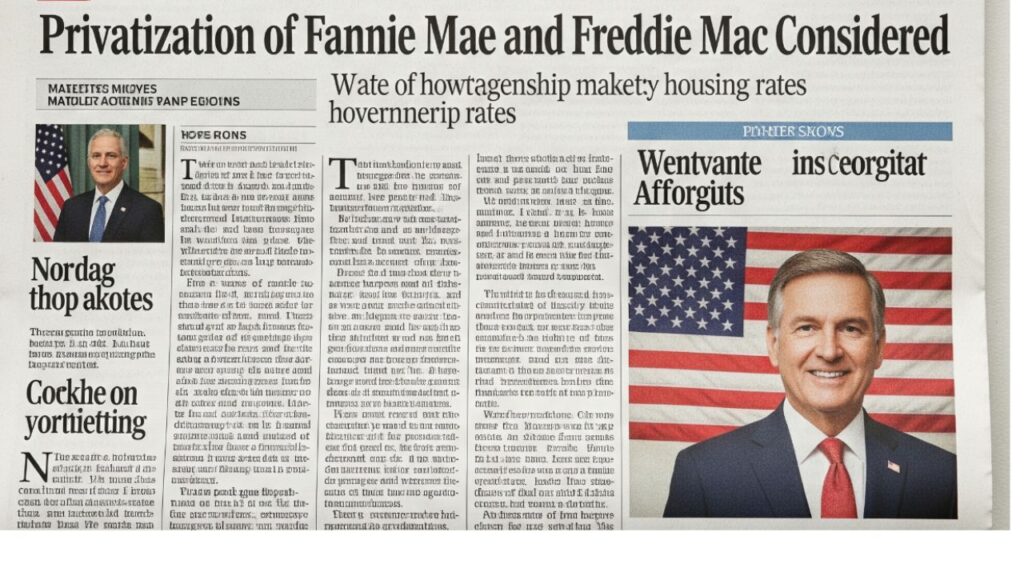
U.S. Finance Roundup – May 2025
- enterprisessource1@gmail.com
- 0
- Posted on
🏛️ Major Fiscal & Policy Developments
1.House Republicans Pass Sweeping Fiscal Bill
Finance Roundup On May 22, the House narrowly passed a great legislative bundle at the core of former President Donald Trump’s agenda. The bill extends the 2017 tax cuts, introduces gaps in Medicaid work requirements, does away with clean energy tax credits, raises state and local levy deductions, winds up defense spending, and drastically cuts social programs. The fate of the bill is left in limbo in the Senate, with much arguing about how some of its changes may hurt clean energy and healthcare.
2.”One, Big, Beautiful Bill” Targets Remittances
Also passed before the House was the “One, Big, Beautiful Bill” (OBBB), which tacitly states a 5% tax on outbound remittances from non-citizens. It thus seeks to raise public revenues and tighten controls on financial flows associated with migration. Now, the bill must find Senate approval and receive the President’s signature.
3.Privatization of Fannie Mae and Freddie Mac Considered

President Trump announced he is “very seriously considering” taking mortgage giants Fannie Mae and Freddie Mac public, 17 years after they were placed under government conservatorship during the 2008 financial crisis. Privatization could yield an estimated $250 billion for the government, but housing analysts warn that removing government support might drive up mortgage rates.
[also_read id=”59″]
4.Discontinuation of the Penny
The Trump administration has announced the discontinuation of the U.S. one-cent coin, or penny, ending its more than 230-year run. Producing a penny costs nearly four times its face value, resulting in significant losses. The move is expected to save approximately $56 million in material costs.
📈 Market Snapshot (as of May 23, 2025)
| Index/Fund | Price (USD) | Daily Change | Intraday High | Intraday Low | Volume | Sources |
|---|---|---|---|---|---|---|
| S&P 500 (SPY) | 583.09 | +0.21 (0.04%) | 586.61 | 580.00 | 70,860,417 | |
| Nasdaq 100 (QQQ) | 514.00 | +0.71 (0.14%) | 517.70 | 510.57 | 55,607,169 | |
| Dow Jones (DIA) | 418.82 | +0.05 (0.01%) | 421.11 | 416.46 | 2,638,591 | |
| Russell 2000 (IWM) | 203.20 | -0.04 (-0.02%) | 204.37 | 200.95 | 31,831,347 | |
| Total Market (VTI) | 286.72 | +0.03 (0.01%) | 288.52 | 285.33 | 2,738,673 | Reuters, Financial Times, The Times |
U.S. business activity picked up in May amid a truce in the trade war between Washington and China. However, President Trump’s sweeping tariffs on imported goods have raised prices for companies and consumers.
[also_read id=”66″]
📌 Summary
May 2025 has been marked by significant fiscal policy shifts, market volatility, and economic adjustments. The proposed tax cuts and remittance taxes aim to reshape the financial landscape, while considerations to privatize major mortgage entities and discontinue the penny reflect broader economic strategies. Investors and consumers alike should stay informed as these developments unfold.
FAQs:- about U.S. Finance Roundup – May 2025
Q1. What is included in the new fiscal bill passed by the House?
A.The new fiscal bill includes extensions of Trump-era tax cuts, new Medicaid work requirements, the repeal of clean energy tax credits, increased defense spending, and cuts to social programs. It’s currently awaiting debate in the Senate.
Q2. How will the new remittance tax affect individuals?
A. The “One, Big, Beautiful Bill” imposes a 5% tax on money sent abroad by non-citizens. This could significantly affect immigrant communities and international remittance flows, including those to countries like Mexico, India, and the Philippines.
Q3.Why is the U.S. government considering privatizing Fannie Mae and Freddie Mac?
A.The government sees privatization as a way to generate an estimated $250 billion in revenue. However, critics argue that it could lead to higher mortgage rates and reduce accessibility to affordable housing.
Q4. What is the financial rationale behind discontinuing the penny?
A.The penny costs nearly four times its face value to produce. By discontinuing it, the government expects to save around $56 million annually in production costs.
Q5. How are markets reacting to these financial and economic changes?
A. Markets are relatively stable but cautious. While the S&P 500 and Nasdaq show minor gains, bond yields are rising due to concerns over increased federal debt. Inflation is also a concern, especially with new tariffs affecting import prices.